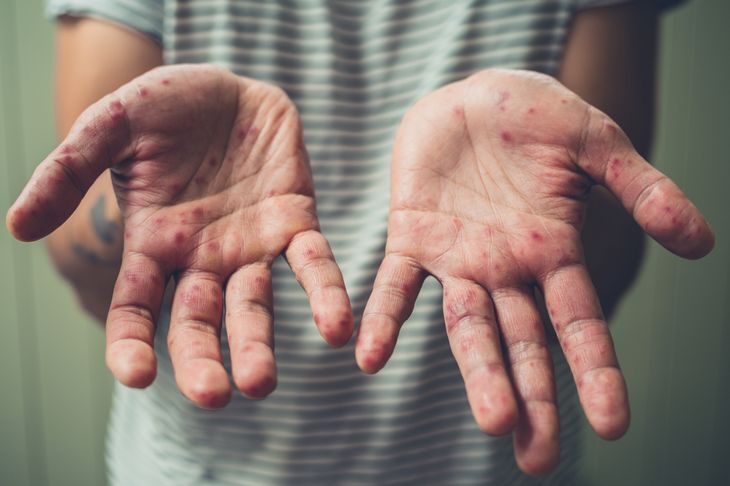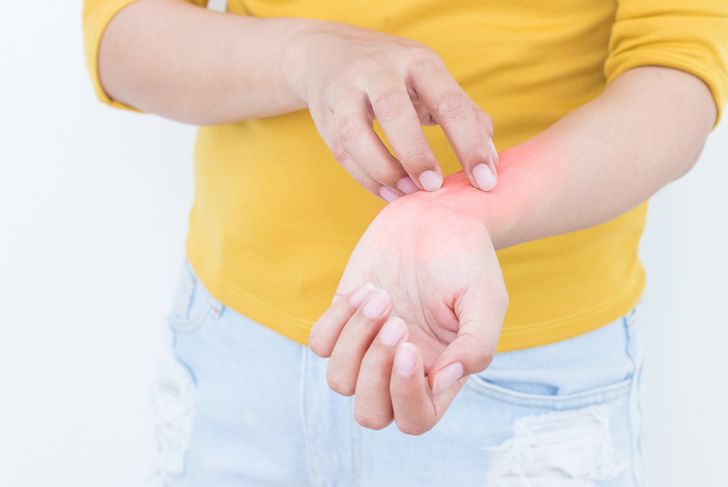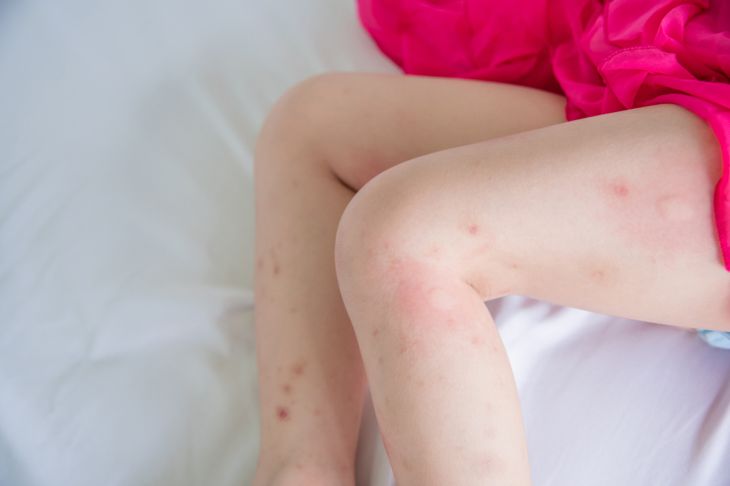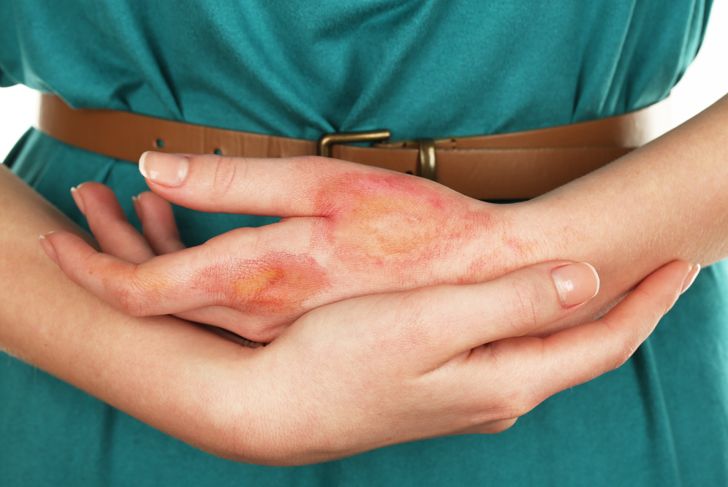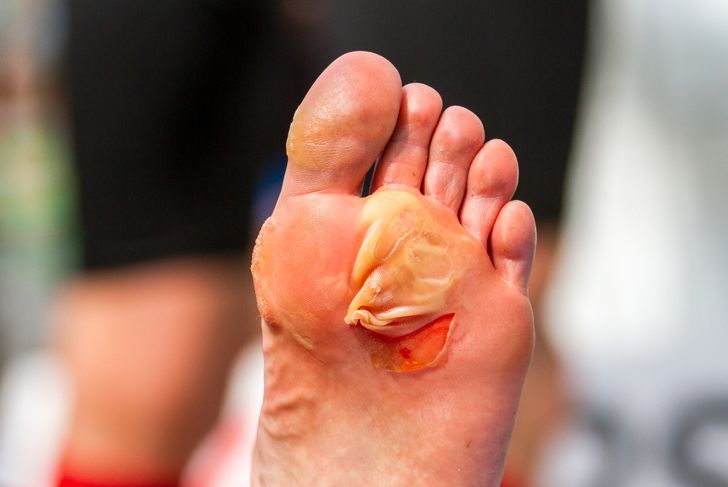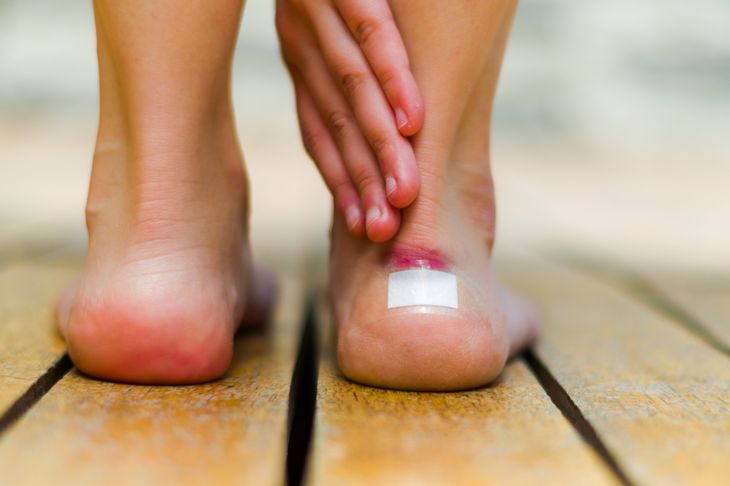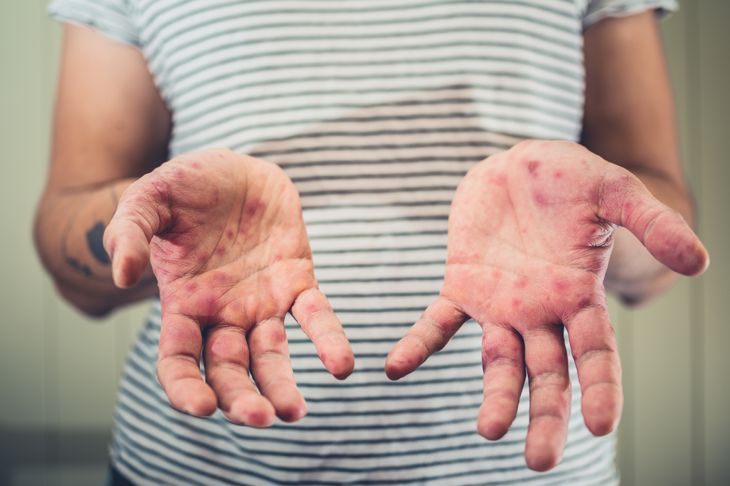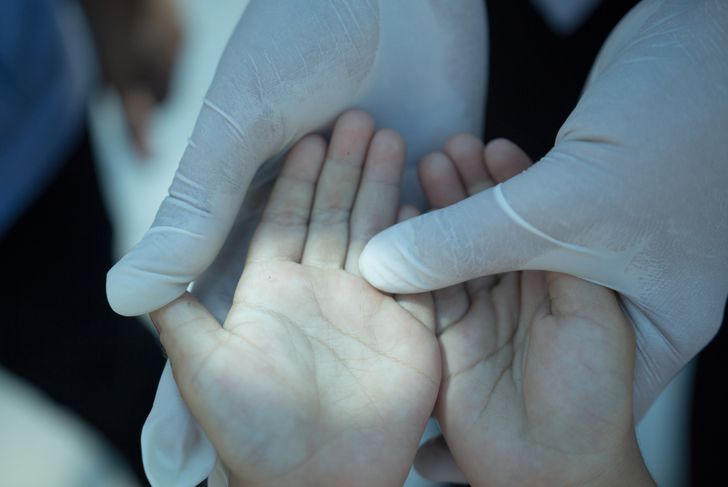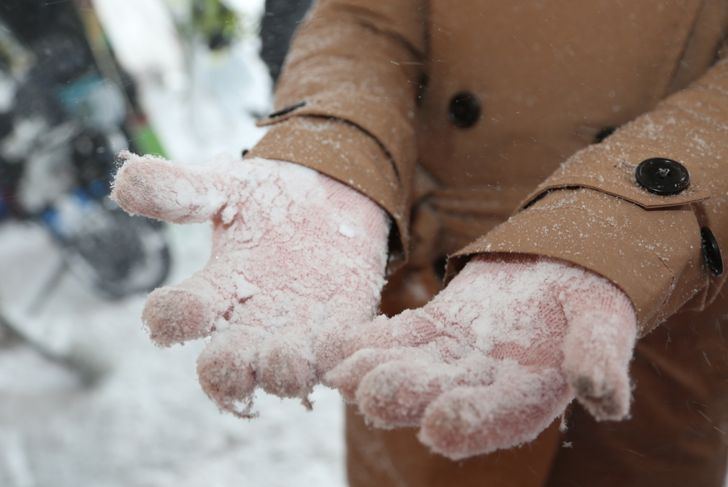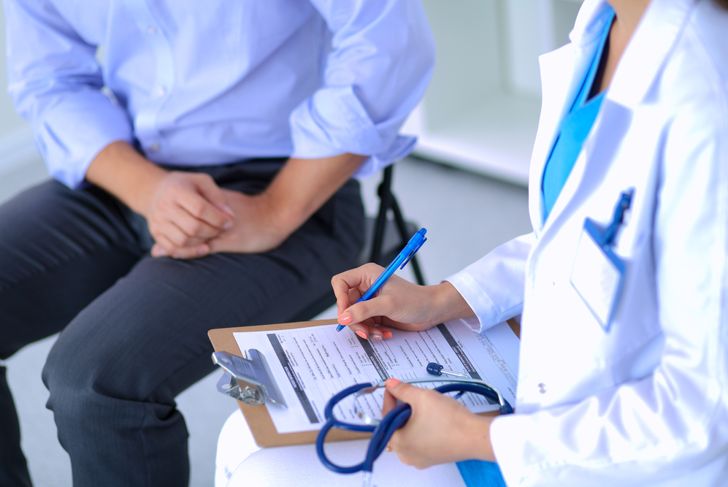Chilblains are sore, itching, inflamed patches of skin that can develop on the backs of the fingers or tops of the toes. Sometimes they crop up on the earlobes, outer thighs, and other parts of the body. They are usually a reaction to cold; the tiny blood vessels near the surface of the skin constrict when cold. This slows down blood supply, and when the skin warms again, the sudden expansion of the vessels from new blood causes blood to leak into surrounding tissues. Poor circulation and other blood vessel problems lead to chilblains. The sore areas usually go away on their own after a week or two and do not lead to any permanent damage unless severe infection occurs.
Redness
Redness is a common symptom. Several chilblains joined together will create a larger red area. The color of chilblains can vary. They may go from white to blue before turning red. As color changes occur, they may be very painful. The first thing to do is to elevate the affected area to improve blood circulation. If your hands and feet are the problem areas, you can lift them with some pillows. Make sure that you warm up slowly without applying any direct heat to affected areas.
Intense itching
Chilblains can be very itchy. Resist the urge to scratch because this can damage the skin. It may crack open and become infected. The pain is also worse if you scratch. Use witch hazel or calamine lotion to soothe itching. You can also use aloe vera gel for soothing and healing. Some people use over-the-counter topical steroid creams to relieve itching.
Swelling and inflammation
Inflammation is part of the body’s immune response, and damage to tissue does not heal without it. The release of chemicals from white blood cells increases blood flow to the affected area. Onions are an age-old remedy used to soothe inflammation. Cut an onion into thick slices. Rub over the affected area. Leave on for about 15 minutes and wipe off with a warm cloth. Avoid using on cracked skin. A calendula ointment can reduce inflammation. A rose hip tea is rich in vitamin C, which helps to rebuild affected tissues.
Burning sensation
The small nerve fibers in the skin cause the burning sensation. This you experience with chilblains. Some causes for burning in feet can result in nerve damage. The burning felt with chilblains is a temporary sensation. You can soak the affected area in warm water with Epsom salts for 15 to 20 minutes, three times a day. Another beneficial soak is to add herbs such as ginger or thyme to warm water. Friar’s balsam and a weak iodine solution mixed might help. Avoid using on cracked skin.
Blisters
A blister is a small pocket of clear fluid under the skin. Blisters do not always occur when you have chilblains. If you do have blisters, they usually heal on their own within a week. You should not have to see a doctor unless a blister becomes infected. Apply an aloe vera gel to the blistered skin to promote healing. To protect blisters and prevent infection you can cover them with a dressing. Don’t burst the blister yourself. If it does burst, wash your hands before touching it. Don’t try to peel away the skin. Allow the fluid to drain before covering it.
Pain
Chilblains may not be painful at first, but pain and tenderness can develop. Pain and inflammation usually go together and are signs that the body is fighting to heal itself. You may want to try black peppercorns to reduce inflammation and pain. You need to grind a teaspoon of black peppercorns. Heat a tablespoon of sesame seed oil and add the ground peppercorns to it. Strain the mixture and allow it to cool down. Use the warm oil to massage the affected areas two times daily. Avoid using on cracked skin. Some people use over-the-counter pain medications to treat pain.
Change in skin color from red to dark blue
If you are repeatedly exposed to cold conditions, your chilblains may become persistent. Your skin may develop scarring or appear different in color to surrounding skin. A blood pressure lowering drug nifedipine helps to dilate the small blood vessels. This vasodilator may help to treat chilblains that are not healing at a normal rate. It may also help people who suffer repeatedly. It comes as an oral pill or topical formula.
Infection
If you scratch the affected area, you may develop the infection. The germs present on the surface of the skin can get inside it. Signs that you have an infection are pus forming in the area, feeling unwell, swollen glands and a fever. If the skin breaks, cover it with a dry dressing. Make sure that you clean the skin with an antiseptic to reduce the risk of infection. You may need an antibiotic cream or oral antibiotics if you have a secondary infection.
Appear in unexpected places
Chilblains are not restricted to hands and feet. They can develop on the earlobes, nose, cheeks, heels, shins and outer thighs. Dress up by wearing woolen or cotton socks, gloves, a hat and scarf, and avoid tight-fitting shoes or socks. It is not so much going out into the cold that is the problem with heating up too quickly afterward. You need to avoid rapid changes in temperature. When you come in from the cold, don’t try to heat up too quickly. For instance, don’t warm up toes or fingers directly with a heater or use a hot water bottle without a thick covering. Keep the heat from an electric blanket on low.
Possible ulceration (in severe cases)
Chilblains act like a burn or a scald. For people who already have poor circulation, it’s enough for them to develop an ulcer or wound that does not heal. This can happen if a person is elderly, or has a pre-existing condition such as diabetes. If chilblains are severe, ulcerated or recurring, you will need professional attention. Your doctor may prescribe a preventative drug. If you have diabetes or another pre-existing condition, see your doctor. Check circulation in the affected area. A course of vitamin B improves circulation and prevents chilblains from occurring.

 Home
Home Health
Health Diet & Nutrition
Diet & Nutrition Living Well
Living Well More
More